Australia is a sovereign country.
The country comprises two parts: mainland Australia and the island of Tasmania.
Australia is famous for many things, such as tropical beaches, lush rainforests, aboriginal culture, marine reserves, wine country, and the very adorable koala.
Most of the country experiences four seasons.
The climate is desert and semi-arid, somewhat fitting for the alligator habitat but not entirely.
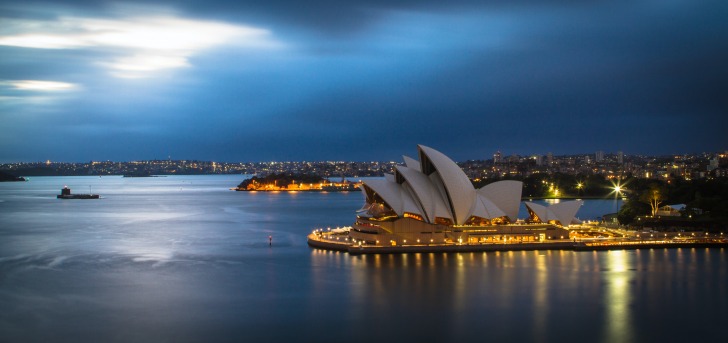
Contents
So… Are There Alligators in Australia
No, there are no alligators in Australia.
Let’s quickly look at why you won’t find alligators in Australia.
Location is a crucial indicator of looking at an alligator or crocodile.
Alligators are native to two regions: North America and China.
There are currently only two types of alligators:
- The Chinese alligator (Alligator sinensis)
- The American alligator (Alligator mississippiensis)
If you see a reptile and are unsure whether it is an alligator or crocodile, chances are it’s a crocodile if you are not in the US or China when you spot it.
The only time you will spot an alligator in another country, other than China or the US, is if that alligator is held captive in a zoo.
The American alligator lives in wetlands, swamps, rivers, lakes, lagoons, and marshes.
These water environments help the alligator cool off when it gets too hot.
Like the American alligator, the Chinese alligator prefers to live in fresh or brackish water, ponds, rivers, lakes, and swamps/wetlands.
Both the Chinese and American alligators prefer areas with slow-moving water.
That is one of the primary reasons that alligators won’t find Australia’s habitat very suitable.
Australia has a desert and arid climate.
It is hardly suitable for alligators, requiring water and a semi-tropical climate.
However, a few lakes and rivers may be suitable for alligators.
Alligators are cold-blooded creatures that depend on outside heat sources to maintain their body temperature.
The problem with Australia is that the temperature range may not be ideal for alligators due to its desert-like climate.
Alligators often bask in the sun to keep their bodies warm enough to function.
And, it’s no secret that Australia can get pretty cold in the evenings.
There are, however, crocodiles that live in Australia.
The country is home to two different species of crocodile: freshwater crocodile (Crocodylus johnstoni) and saltwater crocodile (Crocodylusporosus).
Many people mistakenly believe that alligators live in Australia and confuse crocodiles for alligators.
It’s understandable.
That’s because not everyone knows how to tell the difference between the two.
As mentioned, there are no wild alligators in Australia.
But, there are alligators in captivity.
The Australian zoo is home to some American alligators.
Tourists and residents can visit the zoo to view the American alligator.
Ten new large alligators were introduced to the zoo in 2021 in New South Whales.
Whether these alligators will ever be let go back into the Australian wild remains to be seen.
For now, visitors and residents may view these majestic reptiles in captivity in Australia.
Alligator Species in Australia
The alligator that can be found in Australian zoos is the American alligator.
The American alligator (Alligator mississippiensis) is a carnivorous reptile that lives to be between 35 and 50 years old.
The average length of this reptile is between 10 and 15 feet, and it can grow to weigh approximately 1000 pounds.
They have armored, lizard-like bodies and powerful jaws.
This reptile is approximately 150 million years old.
It survived extinction 65 million years ago.
This was once an endangered species saved from extinction due to an unregulated hunting industry.
It now has a thriving population.
The reptile enjoys state and federal protection.
The demand for its meat and hide has decreased, aiding its survival.
It resides almost primarily in freshwater rivers, lakes, ponds, bayous, swamps, wetlands, and marshes in the southeastern United States.
The species is found in a range from central Texas to North Carolina and down to southeastern Florida.
Many alligators have been taken into captivity and shipped to different locations worldwide.
Alligators are opportunistic.
Their diet mainly consists of snakes, turtles, fish, and small mammals.
However, they have been known to feed off small pets and animals and have previously attacked humans.
Is it Safe to Swim in Australia?
It depends on where you want to swim.
There may not be any alligators in the wild.
Still, crocodiles in Australia threaten humans, as crocodiles are known to be much more aggressive towards humans than alligators.
Two types of crocodiles call Australia home:
- Freshwater crocodile (Crocodylus johnstoni)
- Saltwater crocodile (Crocodylusporosus)
Crocodiles are very common in northern Queensland.
It’s safe to say that every northern Queensland waterway has crocodiles.
Having said that, you might find crocodiles in the rivers and lakes in this part of Australia.
The government often warns residents of Australia to keep an eye out when swimming in natural water environments such as rivers or lakes.
Even though no crocodiles are visible or the area isn’t known to host crocodiles, residents should always remain vigilant, as crocodiles may wander to different locations and hide, waiting to attack.
Crocodiles are masters of camouflage and easily hide in plain sight.
Campers are often warned to set up tents no less than 50 meters from the water’s edge.
Residents are warned not to collect water at the same spot as crocodiles are excellent at noticing habits and will capitalize on this.
Saltwater crocodiles are found in the northern part of the country, where it is colder and there are plenty of wetlands.
Residents are advised to remain vigilant for saltwater crocodiles as this species is also extremely aggressive, with some males growing more than ten feet.
These crocodiles live in brackish water in coastal rivers and spend more time on land than in water.
Freshwater crocodiles are endemic to Australia.
This crocodile species is not known to be aggressive towards humans but will act in self-defense.
They are also smaller than their saltwater counterparts.
The safest public places to swim in Australia have been designated beaches with lifeguards.
It’s best to avoid any rivers, lakes, or lagoons and stick to areas that have been demarcated for swimming.
Always remain vigilant, as some beaches are also known for shark attacks.
Interesting Alligator Facts in Australia
Did you know that the only alligators in Australia are those that live in captivity?
For example, Adelaide Zoo is home to two American alligators, George and Barbara.
Visitors can view the pair from a glass wall.
The alligators arrived at this zoo in 1989 from another Australian zoo, and the zoo keepers do not feed these alligators during the colder months.
The female, Barbara, can get very territorial during the breeding season.
Over the years, she has produced quite a few eggs.
She lays eggs approximately every second year, and many of these eggs are artificially incubated.
Alligators can go for up to two years without having to eat.
American and Chinese alligators are the only alligators in existence.
Both are cold-blooded animals that rely on an outside heat source to regulate their body temperatures.
That’s why you will often see alligators basking in the sun and living in very hot climates that experience mild winters.
When conducting a census on American alligators in the US, scientists often go out at night and count the red eyes in the water.
That’s because the alligator’s eyes glow in the dark.
20 Large male alligators arrived at a zoo in Australia in 2021.
These reptiles are some of the most vocal of their species.
They use a series of sounds, such as bellows and growls, to communicate with each other.
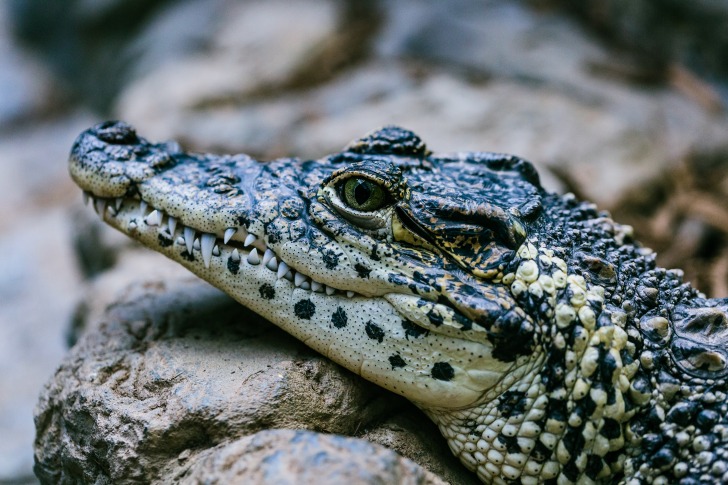
Alligators vs. Crocodiles
The first thing you don’t need to worry about in Australia is figuring out if you are faced with an alligator or crocodile.
That’s because all alligators in Australia live in zoos.
If you spot a reptile that closely resembles an alligator, it’s a crocodile.
The first and most distinct difference between these two reptiles is their snouts.
The alligator has a rounded snout that is flatter and U-shaped, while the crocodile has a more pointy V-shaped snout.
The alligator has an overbite, so you can still see the upper teeth pierce through when it closes its jaw.
The crocodile, on the other hand, doesn’t have an overbite, and when it closes its jaw, you will be able to see visible upper and lower teeth.
The two are two very different and distinct shades.
An alligator is usually a darker, deeper shade of gray or green, while an alligator has a lighter green or gray tone.
The alligator’s hide looks like armor. It’s thick.
Crocodiles are usually longer than alligators by a few feet.
In addition, crocodiles are known to be much more aggressive towards humans than alligators.
There have been numerous reports of crocodiles attacking humans without being provoked, while alligators are much shyer.
And lastly, crocodiles are slower than alligators. We’re not saying get into a race with either, but it is worth noting that alligators can sprint up to 35 miles per hour for short bursts at a time.
3 Safety Tips for Swiming in Alligator-infested Waters
- The best advice is to avoid alligator-infested waters altogether. Alligators are opportunistic and masters of camouflage. You won’t notice the alligator until it’s too late. In addition, splashing in the water is a sign of a food source for an alligator. You may as well swim with a target on your back.
- Always swim in groups. Never go out swimming alone. Especially if you are swimming in water known for hosting alligators, you always want to ensure that you have help close by.
- Stay away from the edge of the water. Stay away from the water’s edge if swimming in an alligator-infested area. Alligators lurk in low-lying areas to wait for their next prey. Campers are often warned about setting up tents too close to the water’s edge. Apply the same logic to swimming in an area known for hosting alligators.
Summary
There are no alligators in the wild in Australia, but there are alligators in captivity.
Some areas of Australia offer a great climate for alligators, while others are unsuitable habitats.
There are two different species of crocodile that call Australia home, and residents should always remain vigilant when going to and swimming in natural water.
Crocodiles are notorious for waiting in shallow water to attack.
Australia Safety Overview
READ THE FULL REPORT: Australia Safety Review
Safety Index:
- OVERALL RISK: LOW
- TRANSPORT & TAXIS RISK: LOW
- PICKPOCKETS RISK: LOW
- NATURAL DISASTERS RISK: MEDIUM
- MUGGING RISK: LOW
- TERRORISM RISK: LOW
- SCAMS RISK: LOW
- WOMEN TRAVELERS RISK: LOW
Frequently Asked Questions
Could alligators survive in Australia?
Yes, some regions are safe for alligators to live and call home.
Are there freshwater alligators in Australia?
Yes, but they all live in zoos.
How big are Australian alligators?
Alligators in Australia are American alligators and can grow to 10 to 15 feet.
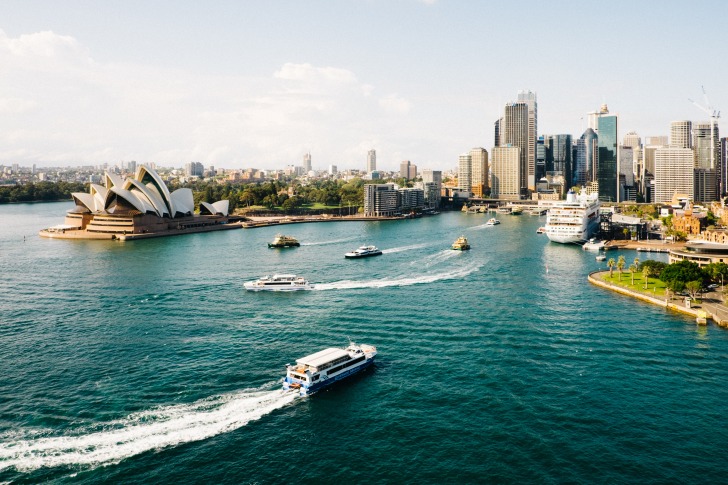

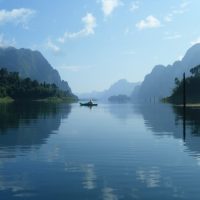
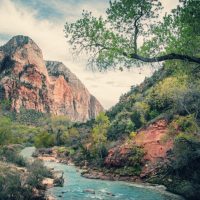
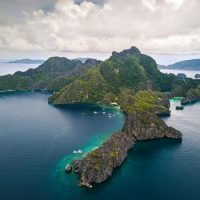

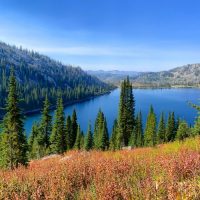





Alligators are not found in the wild in Australia, but there are two species of crocodiles that call the country home, making it important for residents to be cautious when swimming in natural water environments.